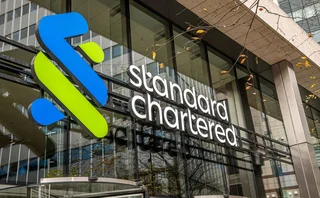

ABN Amro shed €4.5bn non-core RWAs in Q2
Bank seeks to prepare books for Basel IV
ABN Amro offloaded €4.5 billion ($5.2 billion) of non-core risk-weighted assets (RWAs) in the second quarter, as the bank sought headroom to absorb incoming Basel IV capital reforms.
RWAs tagged for wind-down at the corporate and investment bank (CIB) totalled €5.7 billion at end-June, down 44.1% from three months prior and 59% compared to the second quarter of 2020, when the restructuring plan was first announced.
The non-core divestitures – which mainly comprise North American oil and gas assets – were offset by a €2.4 billion, or €8.1 billion, quarterly increase in CIB’s core RWAs, which hit €32.1 billion.
The bank’s RWAs totalled €107.2 billion at end-June, down 4.3%, or €4.8 billion, quarter on quarter. Common Equity Tier 1 (CET1) capital was equal to 18.3% of total RWAs, up a full percentage point from three months prior.
What is it?
The final batch of Basel III reforms – sometimes dubbed Basel IV by the industry – revises parameters for the regulator-set standardised approaches, constrains internal model usage for credit risk and removes banks’ use of internal models for credit valuation adjustments (CVAs) and operational risk.
The reform package also introduces a leverage buffer for global systemically important banks. A risk-weighted asset output floor also limits RWAs calculated using internal models to 72.5% of RWAs using the standardised methodology.
Initially scheduled for January 2022, the deadline for implementing the reforms was pushed back by a year due to the Covid-19 pandemic.
Why it matters
Since the Basel IV package was agreed, ABN Amro has been preparing to take the capital hit in its stride. At end-2019, the bank’s CET1 ratio pro forma for the reforms was 410 basis points lower than reported. As of June, that gap had shrunk to 230bp, and executives expect it to close altogether by the end of the year.
The CIB clean-up has been a linchpin of that effort, with the bank getting rid of RWAs most liable to bloating under the reforms. The bank said Basel IV would have inflated non-core RWAs by just 10% at end-June, compared with 33% a year earlier.
The divestitures arguably also helped improve ABN Amro’s standing in the eyes of investors.
Disposed assets included trade and commodity finance and North American oil and gas lending – portfolios that produced huge losses at the outbreak of Covid-19 last year and are likely incompatible with the bank’s climate-friendly ambitions.
Get in touch
Like Risk Quantum? Sign up for free to our daily newsletter and check @RiskQuantum for the latest updates.
If you have any thoughts on our latest analysis or want to suggest other ways to present and analyse the data, you can email us.
Tell me more
ABN Amro’s market risk charge grew 54% over Q1
Portfolio shifts aided credit RWA reductions at Dutch banks in 2020
Only users who have a paid subscription or are part of a corporate subscription are able to print or copy content.
To access these options, along with all other subscription benefits, please contact info@risk.net or view our subscription options here: http://subscriptions.risk.net/subscribe
You are currently unable to print this content. Please contact info@risk.net to find out more.
You are currently unable to copy this content. Please contact info@risk.net to find out more.
Copyright Infopro Digital Limited. All rights reserved.
As outlined in our terms and conditions, https://www.infopro-digital.com/terms-and-conditions/subscriptions/ (point 2.4), printing is limited to a single copy.
If you would like to purchase additional rights please email info@risk.net
Copyright Infopro Digital Limited. All rights reserved.
You may share this content using our article tools. As outlined in our terms and conditions, https://www.infopro-digital.com/terms-and-conditions/subscriptions/ (clause 2.4), an Authorised User may only make one copy of the materials for their own personal use. You must also comply with the restrictions in clause 2.5.
If you would like to purchase additional rights please email info@risk.net
More on Risk Quantum
Commerzbank wager swells UniCredit’s modelled RWAs by 62.5%
Total return swaps on German shares inflate VAR and SVAR components
Consolidation of Arval exposures adds €20bn to BNP Paribas’ RWAs
Bank shifts exposures from soon-to-be retired equity IRB treatment to standardised approach
Russian loan liquidation lifts RBI’s risk density
Cash parked at sanctioned central bank carries higher capital requirements than original loans
CCPs’ skin in the game drops to historic low
Clearing members bear increasing load, analysis of 15 clearing houses shows
StanChart’s market RWAs hit eight-year high
Client-driven RWA deployment raises market risk exposure by $3.2 billion
Valley National sees surge in delinquent CRE loans in Q3
Bank’s net charge-off rate more than doubles as $114 million in CRE loans become past due
UBS logs three VAR breaches on legacy Credit Suisse positions
Bank risks higher capital charges amid market volatility and exit-related costs
HSBC’s China CRE provisions surge to cover one-fourth of book
Additional reserves and reduced exposure elevate ECL coverage for mainland portfolio








